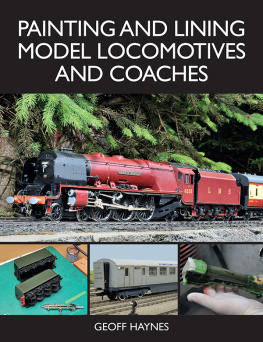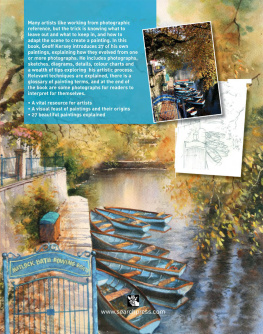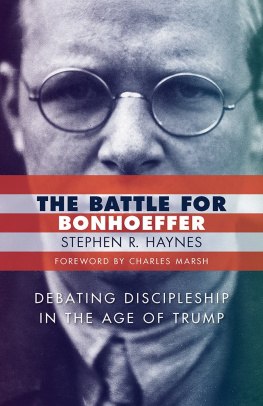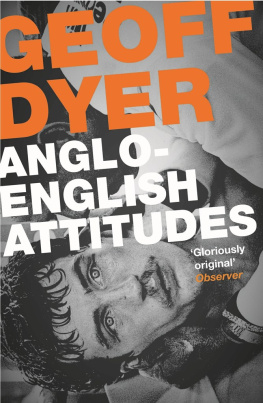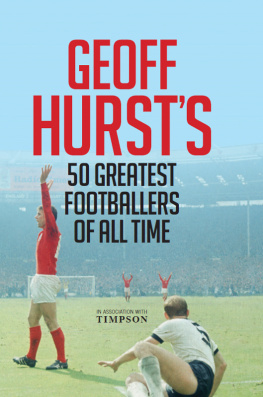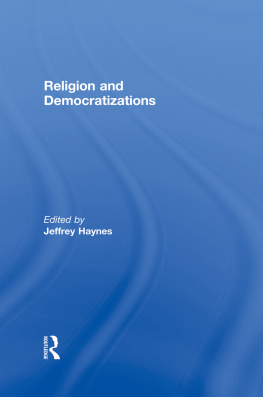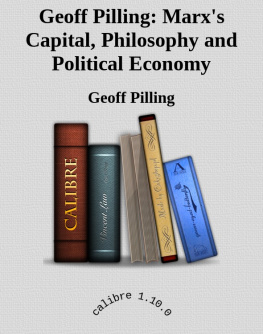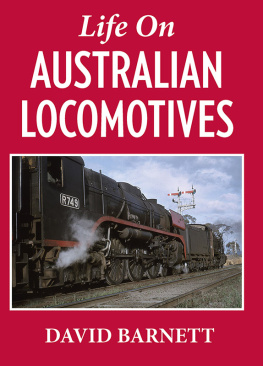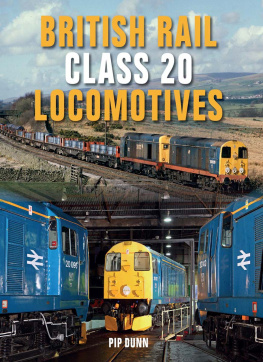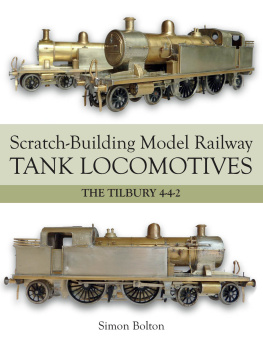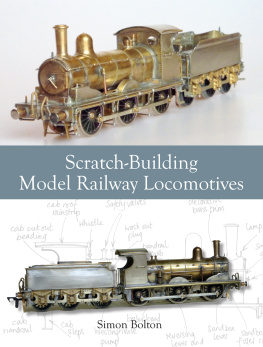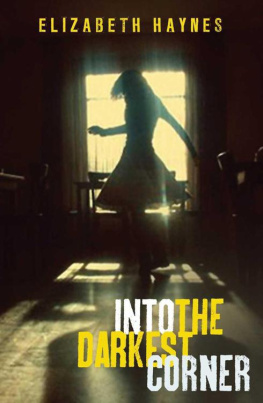Haynes Geoff - Painting and Lining Model Locomotives and Coaches
Here you can read online Haynes Geoff - Painting and Lining Model Locomotives and Coaches full text of the book (entire story) in english for free. Download pdf and epub, get meaning, cover and reviews about this ebook. publisher: Crowood, genre: Home and family. Description of the work, (preface) as well as reviews are available. Best literature library LitArk.com created for fans of good reading and offers a wide selection of genres:
Romance novel
Science fiction
Adventure
Detective
Science
History
Home and family
Prose
Art
Politics
Computer
Non-fiction
Religion
Business
Children
Humor
Choose a favorite category and find really read worthwhile books. Enjoy immersion in the world of imagination, feel the emotions of the characters or learn something new for yourself, make an fascinating discovery.
- Book:Painting and Lining Model Locomotives and Coaches
- Author:
- Publisher:Crowood
- Genre:
- Rating:4 / 5
- Favourites:Add to favourites
- Your mark:
- 80
- 1
- 2
- 3
- 4
- 5
Painting and Lining Model Locomotives and Coaches: summary, description and annotation
We offer to read an annotation, description, summary or preface (depends on what the author of the book "Painting and Lining Model Locomotives and Coaches" wrote himself). If you haven't found the necessary information about the book — write in the comments, we will try to find it.
Painting and Lining Model Locomotives and Coaches — read online for free the complete book (whole text) full work
Below is the text of the book, divided by pages. System saving the place of the last page read, allows you to conveniently read the book "Painting and Lining Model Locomotives and Coaches" online for free, without having to search again every time where you left off. Put a bookmark, and you can go to the page where you finished reading at any time.
Font size:
Interval:
Bookmark:

PAINTING AND LINING
MODEL LOCOMOTIVES
AND COACHES
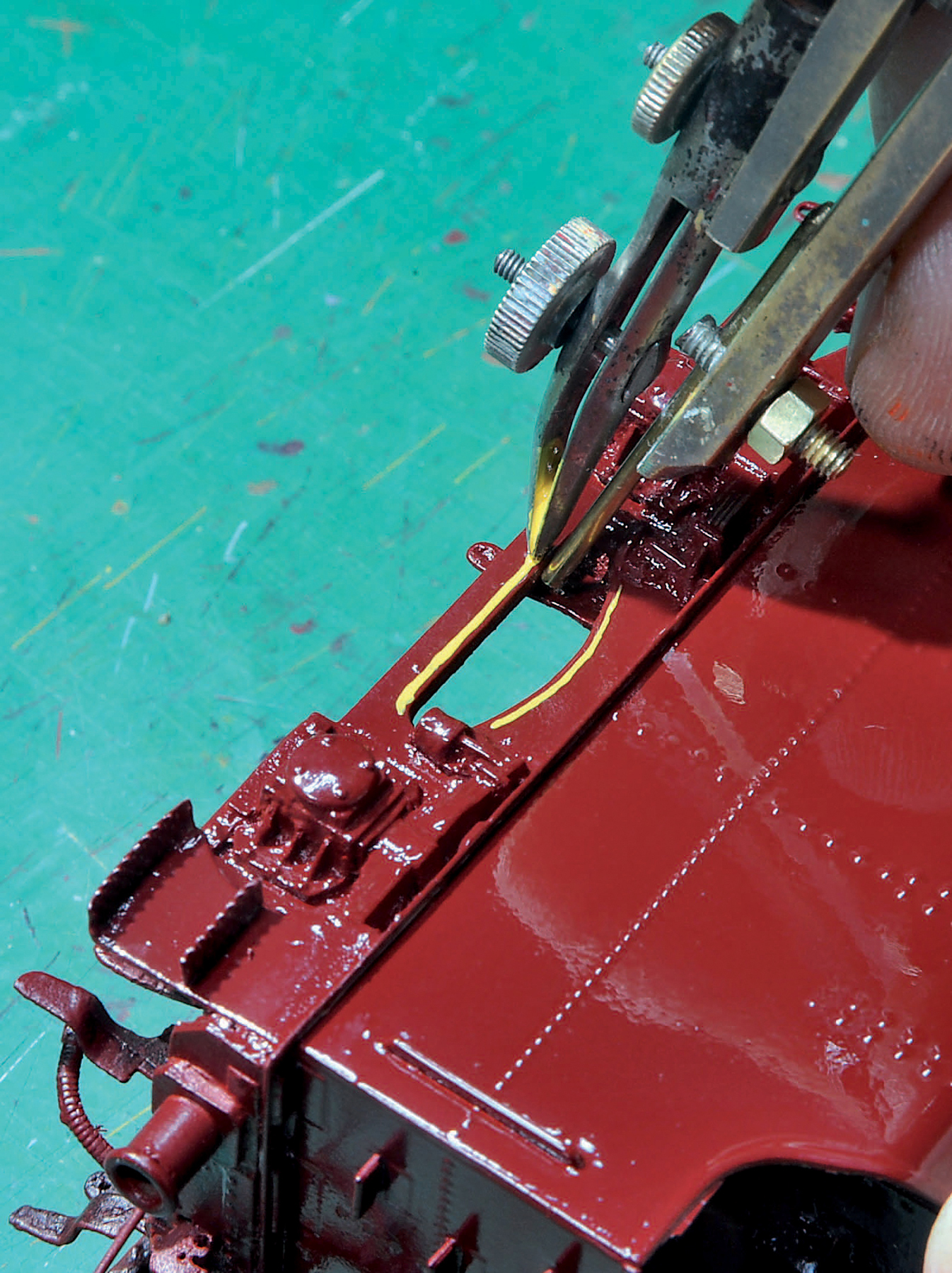
PAINTING AND LINING
MODEL LOCOMOTIVES
AND COACHES
GEOFF HAYNES

First published in 2019 by
The Crowood Press Ltd
Ramsbury, Marlborough
Wiltshire SN8 2HR
This e-book first published in 2019
www.crowood.com
Geoff Haynes 2019
All rights reserved. This e-book is copyright material and must not be copied, reproduced, transferred, distributed, leased, licensed or publicly performed or used in any way except as specifically permitted in writing by the publishers, as allowed under the terms and conditions under which it was purchased or as strictly permitted by applicable copyright law. Any unauthorised distribution or use of this text may be a direct infringement of the authors and publishers rights, and those responsible may be liable in law accordingly.
British Library Cataloguing-in-Publication Data
A catalogue record for this book is available from the British Library.
ISBN 978 1 78500 628 9
All photographs by Tony Wright unless stated otherwise
DEDICATION
This book is dedicated to my parents, Rosemary and Peter. It was my dad who first got me into modelling, helping me to select tools and my first airbrush, just after my 10th birthday. It was my mum who allowed the kitchen to become a spraying area, and for modelling including painting to take place in the lounge.
ACKNOWLEDGEMENTS
This book would not have been possible without the excellent photographic skills of Tony Wright. On no fewer than six occasions, he came to my work room and spent the majority of the day photographing various models in progress. He also did 10 photo sessions for me in his studio. For this I thank him sincerely.
I must also thank my brother Ivan, who proofread my workings, and was constantly available to bounce off ideas throughout the writing process.
My thanks also go to Alan Brackenborough, whom I have known for as long as I can remember, as he is a friend of my parents. Alan represents the benchmark in model painting and is probably the most revered professional model painter in the business. I have early memories of watching him spraying in his basement and painting in his work room, which had a particularly memorable and (to me at least) pleasant smell of turps. His table was normally full of models, each at a different stage of painting. He has been a point of reference and advice over the years, both before and after I turned professional.
The late Alan Browning was a major influence on my early years in railway modelling. With an eye for detail, he inspired me to identify the variances between locomotives of the same class, and showed me how to model that detail.
Finally, I thank Sue my partner, and our two daughters Joanna and Abbey, for their support while I was writing this book.
CHAPTER ONE
INTRODUCTION
I have always wanted to paint my own models. I first started spray-painting at the age of 10 with the old Humbrol airbrush. After a trip to the Farnborough Airshow, I received a number of plastic aircraft kits for my 10th birthday, and my dad encouraged me to spend some of my birthday money on some paint, and on that airbrush. My pocket money would not stretch to the cans available for the supply of air, so we obtained a car wheel and tyre and used that for the purpose. Having then got into modelling ex-Midland LMS, I built up a small collection of plain matt black liveried locomotives and one black loco, which was lined by my dad. After a few years, I felt it was time to upgrade my airbrush, and I bought a Paasche, along with a simple compressor. Feeling brave, I had a go at a crimson loco, which I lined to a reasonable standard with Rotring-type pens and water-based paint. I then built a number of coaches that needed lining in LMS livery, and achieved success again with the Rotring pens. However, I realized that, in order to get the range of colours I needed for other liveries and to obtain more consistent performance, I would need to develop my skills with a bow pen. I also upgraded my compressor to a larger model, this time with a reservoir. I started to spray finishes that were not just matt and it was at this point I realized that my technique was not correct. After a lot of practice and research, I worked out what I was doing wrong and was able to change my approach.

My first commission, photographed on the clients layout. The loco is a GWR Bulldog, from a Martin Finney kit. PAUL BASON
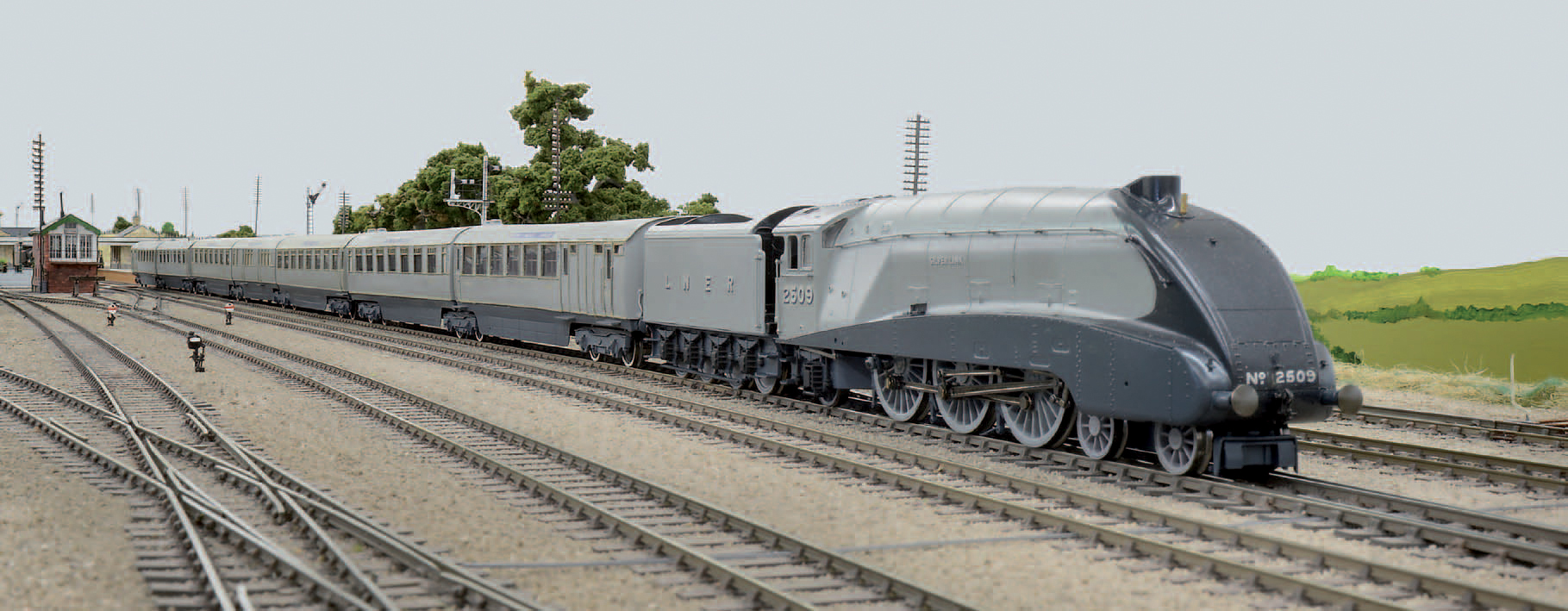
The LNER Silver Jubilee train, photographed on Tony Wrights layout of Little Bytham. The coaches are built from Marc Models kits and the loco is a repainted Hornby model, supplied by the client.
The first model that I built as a commission was back in 2004. I was to paint the chassis mainframes satin black, and then return the reassembled model for painting by someone else. It felt strange to me to be letting go a part-completed model. I completed three commissions in total to this specification. By 2006, I was introduced to someone who wanted a GWR Bulldog built for his OO layout. This relationship developed, and I ended up building two more locos for him in O gauge, and then painting and lining a GWR King, an auto coach, a Banana railcar, and a pair of B set coaches, all in O gauge. I continued to take a very small number of complete build and paint commissions over subsequent years, fitting them between the day job and my own modelling. In the spring of 2014, I decided that I would make the model-making my day job. My intention was to provide a building service that included painting, lining and weathering to clients specifications. However, as word has spread, I have taken in a number of painting and lining, and also weathering, commissions, which I am fitting in and around the building jobs.
This book aims to cover all the main areas of painting railway models, including the preparation, which actually goes back to the building part of the process, the priming and the main colours. Then I will look at ways to apply lining to models, with step-by-step photos. The application of lettering, numbering and decals comes next; I always get the lining done before applying decals, as lining is generally by far the longer job and I want to minimize the risk of damage to transfers by handling. Occasionally, I have been unhappy with a result and have decided to start over. In such cases, if I had already put the transfers on, they would have been lost. On the other hand, if a transfer needs to be removed, it is easy to do this with no damage to the paint underneath. The next stage is varnishing, then in the last chapter I will take a brief look at the weathering process.
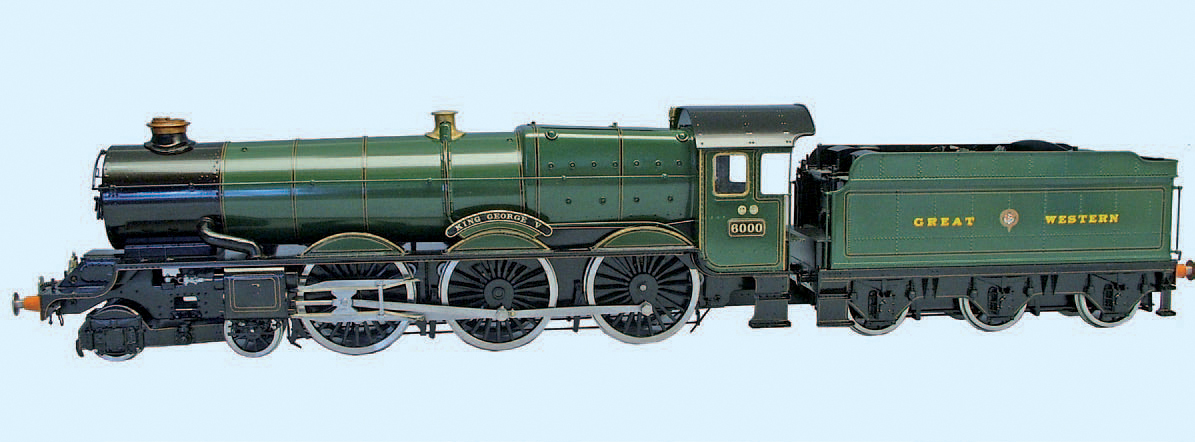
An O gauge Bachmann Brassworks King, painted and lined for the same client as the Bulldog my first attempt at lining in 7mm scale.
Font size:
Interval:
Bookmark:
Similar books «Painting and Lining Model Locomotives and Coaches»
Look at similar books to Painting and Lining Model Locomotives and Coaches. We have selected literature similar in name and meaning in the hope of providing readers with more options to find new, interesting, not yet read works.
Discussion, reviews of the book Painting and Lining Model Locomotives and Coaches and just readers' own opinions. Leave your comments, write what you think about the work, its meaning or the main characters. Specify what exactly you liked and what you didn't like, and why you think so.

